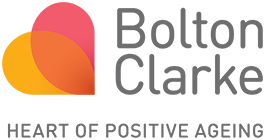Marking 100+ years of pandemic nursing

When the Spanish flu arrived in Melbourne after WWI the Melbourne District Nursing Service’s (now Bolton Clarke) 12 nurses were delivering services by bicycle as they cared for sick patients in the city’s poorest areas.
In 1919 the nurses made 46,208 visits – an increase of about 16,000 over the previous year – due to the flu pandemic.
On International Nurses Day this week, Bolton Clarke Executive General Manager At Home Support Deidre McGill said the organisation was still drawing on lessons learned 100 years ago in the current pandemic. Then as now, innovation was born from necessity.
“Our district nurses were caring for the poor in Melbourne’s inner-city areas when the first Australian case of the Spanish flu was identified in Melbourne in 1919,” Ms McGill said.
“Our first nurse around 30 years before had actually trained under Florence Nightingale.
“There were a lot of slum areas in Melbourne at that time, and the nurses visited people in their homes after they may have gone to hospital. The families were poor – they didn’t have any equipment, no food, no running water or blankets.”
The shift from pedal power to motor cars was a major change for the nurses as a result of increased demand due to the flu pandemic. In 1919 the matron obtained a driver’s licence for the first time and an appeal was launched for vehicles and drivers for the service.
By early May 1919, MDNS nurses were making 1500 home visits a week and the service was down to nine nurses, with two having become ill.
On May 21, The Argus reported that in the previous two weeks MDNS nurses had made 1475 and 1548 house calls respectively, compared with 450 and 375 visits at the same time in 1918.
They treated 1212 individual Spanish Flu patients in March-May 1919 compared with 1100 patients total for the whole of 1918.
Ms McGill said then as now the organisation organised deep cleans, taught patients about hygiene and assisted with the provision of necessities like food and blankets.
“The nurses were incredibly strong and well educated. They understood infection and the principles of infection control, and they put it into practice,” she said.
“We’ve continued to learn across more than 135 years. Our nursing teams in Melbourne were the first Australian care teams to support HIV/AIDS patients in their homes when the mortality rates were very high and the cause not yet known. We’ve similarly dealt with serious outbreaks like H1N1 in the late 90s, SARS in 2002, H1N1 in 2009-10 and MERS in 2012 and at the same time responded to cyclones, floods and fires.”
Across time, innovation was a hallmark.
“Our MDNS nurses went into the first global pandemic on bikes and came out in cars,” Ms McGill said.
“We still use the cars (albeit with some improvements) and we will come out of COVID-19 with enhanced telehealth and connecting technologies like virtual visits and new assistive technology."

